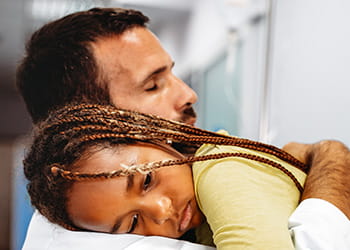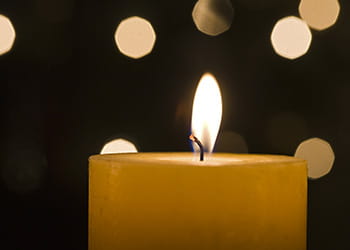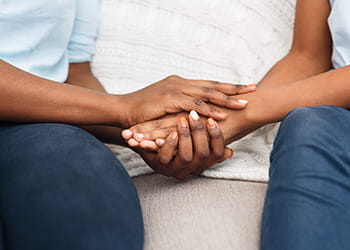Grief & Loss
What is Grief?
The death of a family member, friend or other significant person is a lifelong loss for children and can be a considered a significant event in their life. It is important to note that grief reactions in children are varied, wide-ranging, and unique to everyone. Within the same family, some individuals might experience only a few of the reactions listed, while others might struggle with many reactions. For anyone, these types of reactions are understandable and natural responses to a significant loss (see table below for age specific considerations and information). Additional examples given after table on how to talk about death, specific types of death, arrangements, etc.
Resources on Grief and Loss by Age
Explaining Dying, Death, and Dead:
- Use simple, honest words and phrases. Avoid confusing phrases like “passed away” or “went to sleep.” Instead use concrete, simple explanations to avoid the fear of sleeping.
- Everything that lives dies at some time. Plants die, animals die, and people die. Death is a natural part of life.
- When a person dies, their body stops working their brain can’t send or receive messages, their heart stops beating, their lungs stop working, and their body cannot feel or move.
- It’s important to remember that words or thoughts never cause someone to die.
- A dead person might look like they are sleeping, but they are not sleeping and will not wake up.
- When a person dies, they cannot come back to life.
- When speaking about faith/religious beliefs, it is important to make sure they understand how concrete death is. Using phrases like “went to heaven/next life/paradise/rainbow bridge/moved on to a better place,” “no longer in pain,” “watch over you/guardian angel” can confuse children – they might ask to visit heaven/paradise/better place, ask why they did not get medicine for pain to help, or why they can’t see their angel looking at them.
Explaining Specific Types of Death:
Cancer: A person’s body is made up of cells. Cancer is when the cells don’t grow right, and they make the body sick. Sometimes cancer causes a bump, or lump to grow, and sometimes cancer can make the blood, bones, or other parts of the body so sick that the body stops working.
Heart attack: A person’s heart is the engine that movies the blood through their body. When the heart stops working, it can’t move the blood through their body.
Kidney or Liver Failure: The kidneys and liver help clean the blood in the body. If a person’s kidneys stop working, the blood gets dirty and makes their body get sick.
Suicide: When there’s a sickness in a person’s brain (e.g., depression, addiction, mental illness), the sickness can make the person feel so sad and lonely that they do not want to live anymore. When they feel this way, some people decide to do something to make their own body stop working.
Trauma: When there is a big accident that causes a person to have many injuries. Sometimes they can hurt their brain, (which is like the computer for their body and tells our heart to beat, eyes to blink, mouth to talk, lungs to breathe, legs to walk, etc.) but when their brain is hurt/sick the brain does not tell their body to do those things and “turns off.”
End of Life Arrangements:
Funeral/Wake/Celebration of Life/Memorial Service: Ceremony that is held because someone has died. Friends and family gather to feel/show sadness, celebrate and/or give thanks for the life the person had that has died.
Burial: The act of placing a dead body or object (cremation remains) into the ground. The dead body/object is put into a coffin/casket (a box used to keep dead bodies) and placed into the ground, or a grave. The grave is usually marked with a headstone so people know who is there and can visit.
Cremation: Their body is no longer attached to the physical body (think about old clothes that we discard as we put on new ones). unique process with lots of heat that turns the body into small pieces that look and feel like sand. But, it’s not like the sand at the beach. It’s different, even though it looks the same. There are no dead bodies in the sand at the beach. When a person dies, they no longer feel anything. The cremation process doesn’t hurt because the body is no longer alive and cannot feel pain.






